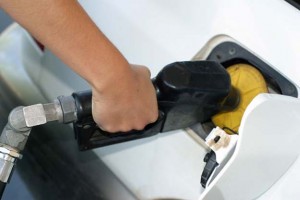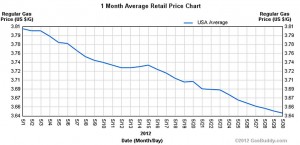It wasn’t all that long ago that American motorists were being greeted with shrill headlines forecasting $4, even $5-a-gallon gas by summer.
It certainly seemed plausible after the rapid run-up during late winter and early spring, prices at the pump coming within pennies of the all-time record set back in July 2008. But a funny thing happened just as the traditional driving season approached: fuel prices began to tumble and the downward trend may well continue through the summer.
Over the Memorial Day holiday various tracking services showed that fuel prices dipped to around $3.65 a gallon, about 27 cents lower than their national peak in early April.
“Had you asked me back in January if the national average would have been that low on Memorial Day, I likely would have chuckled,” said Patrick DeHaan, a senior analyst with GasBuddy.com. Looking forward, he told TheDetroitBureau.com, “prices could go either way,” depending upon a variety of factors, though for now, the trend appears to be downward.
The tracking service shows that just since the holiday pump prices have continued sliding: to a national average of $3.646 today, down from $3.807 at the beginning of May. In fact, rather than seeing a record high, motorists are now paying less than they did a year ago, when the price of a gallon of unleaded regular averaged $3.779 at self-serve pumps.
“I’m not sure who to thank, but I’ll take it,” laughed motorist Jerry Benjamin after filling up his big Chevrolet Suburban at Sunny’s Sunoco in Pleasant Ridge, Michigan. “If I can save a quarter a gallon on a tank like this that’s $5, $10 a week extra for me and the family.”
Who to thank – like whom to blame for the spring run-up – is a complex topic.
One might be tempted to point fingers at Washington, and certainly, Pres. Barack Obama came under fire when fuel prices started nearing $4 a gallon. His challenger for the White House, Mitt Romney, said last month that the president, “gets full credit or blame for what’s happened to this economy and what’s happened to gasoline prices under his watch.”
In reality, suggested GasBuddy’s DeHaan, the White House was responsible for neither this year’s run-up in fuel prices nor its sharp decline. Among the factors he and other analysts cite:
- A fire at a Washington State refinery last February led to short supplies of gas, especially on the West Coast, a situation that worsened as other refineries scheduled maintenance or lost production during the annual switch to summer-blend fuels designed to reduce emissions in hot weather;
- Demand has been surging in China, India and other emerging markets stretching thin global petroleum supply lines and refinery capacity;
- The nascent economic recovery in the U.S. led petroleum traders to bid up fuel prices even further.
But the recovery has been going slower than expected, putting downward pressure on pricing. And so has the fact that Americans are not only driving less but are migrating to more fuel-efficient vehicles. A study by the Brookings Institute reveals that the average vehicle clocked only 9,500 miles in 2011, roughly the same mileage as in 1997.
Then there’s the economic crisis in Europe. With Spain’s economy in free-fall and Greece facing the prospect of having to abandon the common currency the value of the Euro has been tumbling against the dollar. “And that’s driving oil prices down,” according to analyst DeHaan.
As of Wednesday morning, benchmark crude prices had dipped below $90 a barrel on the New York Mercantile Exchange, largely due to concerns about Europe, marking a 15% decline in just four weeks.
“Fears of contagion amid Greek and Spanish debt and economic issues will continue to force downward revision in global economic growth and hence world oil demand,” wrote energy trader and consultant Ritterbusch and Associates in a new report.
But “volatility is increasing all the time,” he warns, offering a long list of factors that could see motorists hammered once again: that includes the still-unresolved issues of Iran’s nuclear program; the possibility of a positive resolution in Greece; further increases in demand by China and other emerging markets; and a significant upturn in the U.S. economy.
Initial data suggest that American motorists celebrated their good fortunes by climbing behind the wheel over the long Memorial Day weekend. The AAA estimated 30.7 million people took trips requiring drives of more than 50 miles, an increase of 400,000, this year. Meanwhile, the American Petroleum Institute reported demand for gasoline surged 0.9% in April compared to 0.3% for the year overall, suggesting usage could be rising fast.
But for now, at least, motorists are getting a much-needed break, according to Tom Kloza, the chief oil analyst at the Oil Price Information Service, and any talk of record gas prices is likely well off into the future.


